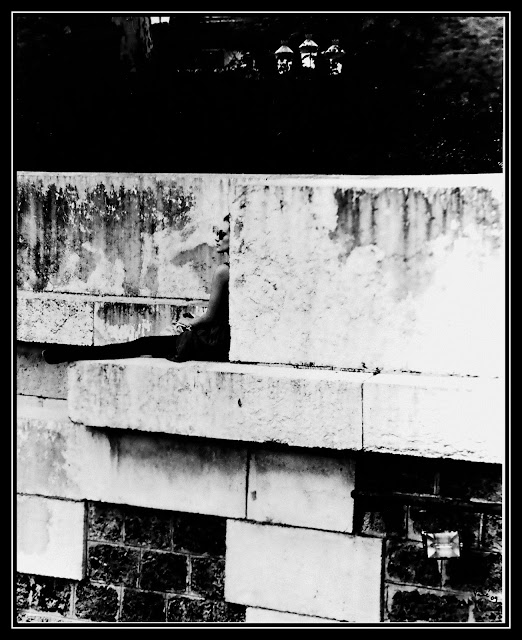A Renaissance-man friend, who harmoniously navigates
between medicine and the arts, sent a picture of a water colour nude painting
his elementary school art teacher had given him as a present. He commented “I love
the richness and warmth of washes of colors”.
Although I started with water colour, most of my
painting is in oil and acrylic. The attraction of water colour remains that of
the unpredictable for me. The way colours could run, mix, and escape what the
painter intended to achieve. When using oil, especially acrylic paint, the
artist remains in full control.
But what makes a water colour work most attractive
to me is the harmony that the unpredictables achieve.
So, this morning I was thinking about the science
and poetry of harmony.
Of course, as a photographer, I cannot think about
harmony without recalling Newton’s seminal work Optiks where in the 1660s,
he carried out experiments of sun rays’ reflections and refractions through
prisms. This is how we know about rainbows as he identified the ROYGBIV colours
(red, orange, yellow, green, blue, indigo and violet). He stated:
“…if
the Sun’s Light consisted of but one sort of Rays, there would be but one
Colour in the whole World”
But a rainbow, or harmony in colours, is never
exclusively a scientific observation. Indeed, Goethe, as a philosopher, suggested
that observed colour was not simply a scientific measurement, but a subjective
experience perceived differently by each viewer. He stated:
“Colour
are light’s suffering and joy”
Interestingly, the discussion of colour preceded
both Newton and Goethe, as Aristotle tackled the theory of colour by bringing
in religious interpretation. He proposed that colour came from heaven and that
all colour came from darkness and lightness or black and white. In some way,
Aristotle addresses colour as if a reflection and refraction of the human
condition, or perhaps vice versa.
(A good discussion of the above history can be found
on this Smithsonian library page “The
Science of Colour” https://library.si.edu/exhibition/color-in-a-new-light/science)
So, with the
scientific, philosophical and religious background to the theory of colour and
the concept of harmony, my mind migrated to the Hebrew and King James Bibles. I
grew up with the imagery attributed to Isaiah 11:6 where the image of peace,
calm and harmony is the lion lying down with the lamb.
Well, a little research let me to realize that
neither the Hebrew Bible (The Tanakh) nor the King James Bible mention the lion
lying down with the lamb. Indeed The Hebrew Bible says:
And
the wolf will dwell with the lamb, And the leopard will lie down with the young
goat, And the calf and the young lion and the fatling together
And the same lines in Isaiah 11:6 in the King James
Bible (1611) read
The
wolfe also shall dwell with the lambe, and the leopard shall lie down with the
kid and the calfe and the yong lion, and the fatling together
… All this brought me back to black and white
photography! In the past 55 years I have, a street photographer captured
fleeting moments from around the world on miles of film that probably would
cover part of the world at list once. I looked for a couple of shots that may represent
harmony in the context of this discussion.
The photo on top is from Santa Fe, New Mexico I took
with a 1960s Nikon F fitted with a same era Nikkor 105 mm lens. A man was
metaphorically describing harmony through his dog, cat and a white mouse. When
I saw the scene, the mouse was on the back of the cat. By the time I clicked, had moved on the neck of the cat expressing the hope that a dog, a cat and a mouse
can co-exist without fear. In harmony.
Then I thought of a photo I took in a 1880s forsaken
Arizona cemetery. The grounds were unkept, overgrown weeds and cactus covering the
few gravestones half sunk in the ground under the weight of time. There was a
wooden cross, lonesome and without any markings but somehow represented a calm
to my moment.
Unkept grounds and unwept cross.
I had a 1955 Soviet/Ukrainian Zorkii camera, a Leica
clone I have used for decades. The lens is a 1956 Jupiter-8 marked in Cyrillic,
ЮПИТЕР-8, a postwar Soviet copy of the prewar Zeiss Sonnar 50mm
f/2 for the Contax.
Here is the camera and lens:
I like this lens for portraiture as wide open it
gives the characteristic Sonnar swirls to the background of the subject in
focus.
This time, my subject was the lonesome cross with no
markings. And the 65 year old lens gave swirls and light flare that I was not
anticipating, as if the running colours in water colour painting.
And the circle was completed.
July 28, 2021
© Vahé A. Kazandjian, 2021

















































